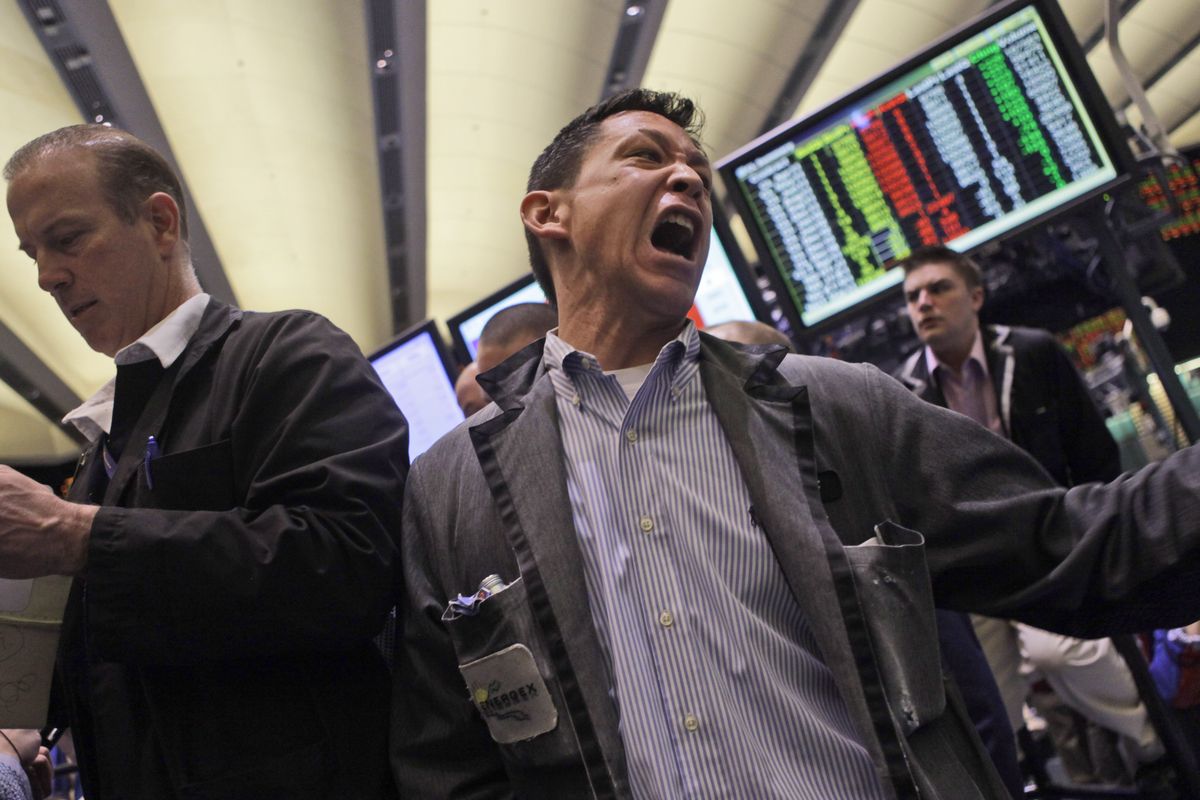Oil prices top $100, may rise
World violence adds $10 a barrel ‘fear premium’

WASHINGTON – Just as the U.S. and global economies are finally strengthening, they face a new danger: Rocketing oil prices, which topped $100 a barrel Wednesday.
The U.S. economy can likely absorb $100 oil and keep expanding, even though gasoline prices would rise further and growth would slow. But it would hurt.
Gasoline for U.S. motorists already costs more than at any point since 2008, despite ample supplies. The national average for a gallon of unleaded was $3.19 on Wednesday – 53 cents more than a year ago. Analysts expect the average to range between $3.25 and $3.75 this spring.
Oil prices had been rising for months, but they jumped this week as violence gripped Libya. Analysts say any production declines in Libya could likely be absorbed by other producers like Saudi Arabia. Libyan oil accounts for less than 1 percent of U.S. crude imports.
Still, analysts say concerns about violence in North Africa and the Middle East have put a “fear premium” that’s added about $10 a barrel.
Consumers and businesses would feel pinched by a sustained period of $100-a-barrel oil – and not just motorists. Stock prices, which have lost more than 2 percent so far this week, could sink further. That would reduce household wealth and consumer confidence. As fuel costs rise, so would prices for travel services and products containing plastics.
This month, several airlines tacked on fuel surcharges – extra fees that help cover fuel bills.
Rising oil prices have pushed jet fuel close to $3 a gallon. Fuel accounts for roughly one-third of the budget for U.S. airlines, up from less than one-fifth a decade ago. Fitch Ratings analyst William Warlick said if jet fuel reaches about $3.20 a gallon, “the whole industry will be challenged to stay profitable.”
Airlines may soon decide to eliminate some flights and ground older jets to cut fuel consumption, Warlick said. Delta Air Lines has already scaled back plans to add flights this year.
Analysts estimate that over a year, $100 oil would reduce U.S. economic growth by 0.2 or 0.3 of a percentage point. So rather than grow an estimated 3.7 percent this year, the economy would expand 3.4 percent or 3.5 percent. That would likely mean less hiring and higher unemployment.
The global economy wouldn’t be affected as much. In part, that’s because emerging economies consume less oil, per person, than industrialized countries do. In addition, many developing countries regulate or subsidize the cost of gas. Global growth would slip about 0.1 percentage point, economists estimate.
But oil prices around $100 a barrel could threaten European economies, many of which are net importers of oil and gas, haven’t fully recovered from the financial crisis and face heavy debt loads. Spain and Italy, for example, where gas at the pump already goes for about $8 a gallon, face years of a slow, grinding recovery. A spike in oil would deal their economies another setback.
Pricier oil would also push up inflation in Europe, where it already exceeds official targets, and in countries with surging food prices, like China, Brazil and India. Those countries might then have to raise interest rates to cool inflation. Doing so would slow growth in Latin America and Asia.
A darker possibility – one that few analysts expect – is that oil prices will keep rising until they reach $150 or more and then stay there for months. Under that scenario, another recession is possible, economists say.
Gasoline prices would near $5 a gallon. Consumers would spend much less. So would businesses, which would slash jobs.
“It would nail the economy,” said Mark Zandi, chief economist at Moody’s Analytics. “All the benefits of the tax breaks we got in last year’s tax-cut deal would be completely wiped out and then some.”
One reason the United States and other developed countries can still grow with oil at $100 a barrel is they’ve become more energy-efficient since the oil-price shocks of the 1970s. U.S. retailers and manufacturers that use oil-produced plastics, for example, have been shrinking packaging and packing more items onto their trucks. A new wave of redesigned products, like ultra-thin plastic bottles of water, has also emerged.
“Can we live with $100 a barrel oil?” said economist Ken Mayland of ClearView Economics. “I think so. Can that economy still grow if oil is at $110 a barrel? Yes. But past that, you start getting uncomfortably close to the point where people start curbing their spending.”